SCCM by Davis: “Don S became a registered member” plus 19 more |  |
- Don S became a registered member
- SolarWinds IPAM Tames the Chaos of Complex IP Networks
- Google Fiber in Austin Prompts Time Warner to Bolster WiFi Network
- Rod Trent wrote a new post, System Center Service Manager Connector 3.0 for Exchange released
- SQL trace tool
- IIS status messages
- Disponibilité du Cumulative Update 1 pour SCCM 2012 SP1
- Histórico das versões do SCCM.
- SCCM 2007! - Configuring PXE Role and WDS Server for OSD Deployment
- New Economic Green Solutions-Adaptiva relationship
- Cumulative Update 1 for System Center 2012 Configuration Manager Service Pack 1
- Application Portal - Self Service -
- SCCM 2012 Moving the Database
- Setting up a SPN for SQL
- New Version: Insight Control for Microsoft System Center 7.2
- WDS PXE-E32: TFTP open timeout
- Migrating SCCM 2007 to SCCM 2012 – Part 4 migrations begins
- SCCM Client Certificate Removal
- Installation of Windows ADK (Assessment and Deployment Kit)
- SCCM 2007's dirty little secret
| Don S became a registered member Posted: 28 Apr 2013 05:46 PM PDT Comments: 0 | ||||||||||||||||||||||||||||||||||||||||||||||||||||||||||||||||||||||||||||||||||||||||||||||||||||||||||||||
| SolarWinds IPAM Tames the Chaos of Complex IP Networks Posted: 28 Apr 2013 08:40 AM PDT REVIEW: IP Address Manager from SolarWinds brings centralized monitoring and management to complex IP infrastructures and provides administrators with advanced troubleshooting tools. | ||||||||||||||||||||||||||||||||||||||||||||||||||||||||||||||||||||||||||||||||||||||||||||||||||||||||||||||
| Google Fiber in Austin Prompts Time Warner to Bolster WiFi Network Posted: 28 Apr 2013 08:30 AM PDT The announcement is viewed as a defensive move from the cable giant as Google plans to bring its superfast Internet service to the Texas capital. | ||||||||||||||||||||||||||||||||||||||||||||||||||||||||||||||||||||||||||||||||||||||||||||||||||||||||||||||
| Rod Trent wrote a new post, System Center Service Manager Connector 3.0 for Exchange released Posted: 28 Apr 2013 05:04 AM PDT Originally released on 2011, the Service Manager connector for Exchange has been updated to version 3.0. This version fixes several bugs and improves the functionality. The Exchange connector helps automate […] Comments: 0 | ||||||||||||||||||||||||||||||||||||||||||||||||||||||||||||||||||||||||||||||||||||||||||||||||||||||||||||||
| Posted: 26 Mar 2013 04:07 PM PDT Check out this free, awesome tool for analyzing SQL Server traces called ClearTrace! http://www.scalesql.com/cleartrace/download.aspx | ||||||||||||||||||||||||||||||||||||||||||||||||||||||||||||||||||||||||||||||||||||||||||||||||||||||||||||||
| Posted: 26 Mar 2013 02:32 PM PDT | ||||||||||||||||||||||||||||||||||||||||||||||||||||||||||||||||||||||||||||||||||||||||||||||||||||||||||||||
| Disponibilité du Cumulative Update 1 pour SCCM 2012 SP1 Posted: 26 Mar 2013 07:08 AM PDT Microsoft vient d'annoncer la disponibilité du Cumulative Update 1 pour SCCM 2012 SP1. Corrections :Administrator Console
Site systems
Device management
Software updates
Client
PowerShell
Nouvelles fonctionnalités :PowerShellHelp for PowerShell is updated for the cmdlets that are included in Configuration Manager Service Pack 1 and in this cumulative update. In a PowerShell environment, use the Update-Help –Module ConfigurationManager cmdlet to retrieve the latest Help information from Microsoft. The following cmdlets are added to the PowerShell module:
| ||||||||||||||||||||||||||||||||||||||||||||||||||||||||||||||||||||||||||||||||||||||||||||||||||||||||||||||
| Histórico das versões do SCCM. Posted: 25 Mar 2013 04:08 PM PDT Olá pessoal, É comum nos depararmos com algumas situações em que precisamos saber qual a versão do nosso SCCM pela Build. Para isso criei uma tabela com as versões.
Espero que ajude. Até o próximo post. Abraço. | ||||||||||||||||||||||||||||||||||||||||||||||||||||||||||||||||||||||||||||||||||||||||||||||||||||||||||||||
| SCCM 2007! - Configuring PXE Role and WDS Server for OSD Deployment Posted: 25 Mar 2013 09:17 AM PDT Configuring PXE role and WDS for your System Center Configuration Manager environment is very easy. Check out the video below for the details: please comment, like and subscribe: | ||||||||||||||||||||||||||||||||||||||||||||||||||||||||||||||||||||||||||||||||||||||||||||||||||||||||||||||
| New Economic Green Solutions-Adaptiva relationship Posted: 24 Mar 2013 11:59 AM PDT
Adaptiva Overview Streamline IT operations, extend the functionality of Microsoft System Center ConfigMgr 2012 and rapidly improve ROI Simply Works! According to Gartner Executive Programs' 2012 CIO Agenda worldwide survey of 2,335 CIOs in the fourth quarter of 2011, CIO's top three strategies for 2012 focus on delivering business solutions, reducing the cost of IT and managing a flexible infrastructure.1 Gartner believes IT departments will continue to be challenged to deliver quality end-to-end services in a rapidly changing multi-source environment. Founded in 2004 and a Microsoft Gold Partner, Adaptiva is a leader in systems management solutions. Adaptiva solutions leverage existing IT resources to enhance the operation of Microsoft System Center Configuration Manager 2012 without disrupting service to end-users. Adaptiva conquers the complexity of IT by streamlining operations, extending the functionality of Microsoft System Center Configuration Manager (SCCM) 2012 and rapidly improving ROI on existing systems. Adaptiva provides easy to use software that seamlessly integrates with Microsoft SCCM to help you better manage your IT while reducing the total cost of ownership. Adaptiva Software Suite
Client Health. Automatically diagnoses and remediates malfunctioning PCs and performs WMI self-diagnosis and auto-repair. A sophisticated workflow designer and orchestration engine allows administrators to design custom health checks and remediations, without having to write code. Fully integrated with SCCM 2012. The recipient of awards and accolades, Adaptiva software is deployed on more than 2 million devices globally and sold directly and through a network of partners and channel resellers in more than 14 countries. Adaptiva is privately held and based in Bellevue, Washington. Get Started Today! Learn how Adaptiva can enhance your IT processes while reducing your total cost of ownership. Mitch Morrison Economic Green Solutions http://www.economicgreensolutions.com mmorrison@economicgreensolutions.com mmorrison@nac.net 973.222.4703 M http://www.adaptiva.com | ||||||||||||||||||||||||||||||||||||||||||||||||||||||||||||||||||||||||||||||||||||||||||||||||||||||||||||||
| Cumulative Update 1 for System Center 2012 Configuration Manager Service Pack 1 Posted: 24 Mar 2013 08:48 AM PDT Typically System Center 2012 SP1 components receive Update Rollups together at the same time but it seems ConfigMgr is still exception to that. Cumulative Update 1 for System Center 2012 Configuration Manager SP1 is released by MSFT. This update contains several fixes and believe it or not new functionalities in the form of new PowerShell cmdlets:
You can find out about the fixes and download CU1 from here. | ||||||||||||||||||||||||||||||||||||||||||||||||||||||||||||||||||||||||||||||||||||||||||||||||||||||||||||||
| Application Portal - Self Service - Posted: 22 Mar 2013 04:20 PM PDT I guess the name explain it all , employee in a company always complain that Helpdesk not answering the calls , slow response ..also some installation they need to send a tech support to employee office .
guess what with app portal software , employee will do it by her/him self .
the good thing also it has it is own workflow ,so still Helpdesk or admin to approve or deny , and it integrate with Microsoft SCCM .
this is the future , why to call Helpdesk of you can do it ur self .
now Self Service web or app spreading , and i beleive it is adding huge value .
ya last , SCCM 2012 has it own web for self service but microsoft didnt mention much .
| ||||||||||||||||||||||||||||||||||||||||||||||||||||||||||||||||||||||||||||||||||||||||||||||||||||||||||||||
| Posted: 22 Mar 2013 04:54 AM PDT | ||||||||||||||||||||||||||||||||||||||||||||||||||||||||||||||||||||||||||||||||||||||||||||||||||||||||||||||
| Posted: 21 Mar 2013 06:43 PM PDT Kerberos authentication uses an identifier called the "Service Principal Name" or SPN. Basically, the SPN acts as a domain or forest unique identifier of some instance in a server resource. There can be an SPN for a web service, for an SQL service, or for an SMTP service. There can also be multiple web service instances on the same physical computer that has a unique SPN. This becomes abundantly clear at almost every client I install SCCM for. Most DBAs seem to stick with the well-established best practice of running the SQL services under seperate domain accounts. And most companies seem to want to grant service accounts the least privileges needed: another best practice indeed. As a result, the SPN can fail to be created for the SQL instance for ConfigMan: Why does this happen? By default, if you run the SQL Server service under the LocalSystem account, the SPN is automatically registered and Kerberos authentication interacts successfully with the computer that is running SQL Server. However, if you run the SQL Server service under a domain account or under a local account, the attempt to create the SPN can often fail in most cases because the domain or local accounts do not have the rights to set their own SPNs. When the SPN creation is not successful, it can prevent you from using Kerberos authentication when connecting to the SQL server instance. If this were done with a domain administrator account as the SQL Server service account, the SPN would be successfully created because the domain administrator-level credentials that you must have to create an SPN are present. Most people will opt not to use a domain administrator account to run the SQL Server service and therefore, you must manually create an SPN for your computer that is running SQL Server if you want to use Kerberos authentication when you connect to it. The SPN you create must be assigned to the service account of the SQL Server service on that particular computer. The SPN cannot be assigned to the computer container unless the computer that is running SQL Server starts with the local system account. There must be one and only one SPN, and it must be assigned to the appropriate container. Typically, this is the current SQL Server service account. To configure the SQL Server service to create SPNs dynamically, follow these steps: 2. In the ADSI Edit snap-in, expand Domain [DomainName], expand DC= RootDomainName, expand CN=Users, right-click CN= AccountName, and then click Properties. 3. In the CN= AccountName Properties dialog box, click the Security tab. 4. On the Security tab, click Advanced. 5. In the Advanced Security Settings dialog box, make sure that SELF is listed under Permission entries.If SELF is not listed, click Add, and then add SELF. 6. Under Permission entries, click SELF, and then click Edit. 7. In the Permission Entry dialog box, click the Properties tab. 8. On the Properties tab, click This object only in the Apply onto list, and then make sure that the check boxes for the following permissions are selected under Permissions: 9. Click OK three times, and then exit the ADSI Edit snap-in. To Create an SPN from the command line: 1. Open a Command Prompt or PowerShell from and account with Domain Admin priveleges 2. Type setspn -A MSSQLSvc/server:instance domain\account 3. After the command completes, type setspn -Q MSSQLSvc/server:instance to verify the SPN is successfully created and present. Word. | ||||||||||||||||||||||||||||||||||||||||||||||||||||||||||||||||||||||||||||||||||||||||||||||||||||||||||||||
| New Version: Insight Control for Microsoft System Center 7.2 Posted: 21 Mar 2013 02:44 PM PDT Insight Control for Microsoft System Center is a package of integration kits that aim to integrate HP Hardware and Software with Microsoft System Center. Here is the description of these integration kits taken from the HP site: System Center Operations Manager (SCOM) support:
System Center Virtual Machine Manager (SCVMM) support:
System Center Configuration Manager (SCCM) support:
Let's look what has changed from 7.1 version: Support for Microsoft System Center Operations Manager (SCOM) 2012 SP1
System Center Operations Manager (SCOM) Management Pack Updates
Support for Microsoft System Center Configuration Manager (SCCM) 2012 SP1
Support for Microsoft System Center Virtual Machine Manager (SCCM) 2012 SP1
Updates to support HP Service Pack for ProLiant (SPP)
So we now have full SC 2012 SP1 and Windows Server 2012 support. This is great job of HP releasing support so soon after GA of SC 2012 SP1. If you are wondering what have changed like versions on the SCOM management packs look here: Keep in mind that new versions of the management pack for HP servers and blades will come only in this bundle Insight Control for Microsoft System Center. No separate downloads will be released. HP Storage Management Pack for now stays separate download and it is not provided in this package. To download this new version go here. You only need to download Insight Control for System Center 7.2 DVD ISO – Mar 2013 for the System Center integration kits. | ||||||||||||||||||||||||||||||||||||||||||||||||||||||||||||||||||||||||||||||||||||||||||||||||||||||||||||||
| WDS PXE-E32: TFTP open timeout Posted: 20 Mar 2013 10:20 PM PDT Ever get this message when PXE booting? I did again today. The PXE Server was running Windows Server 2008 R2 SP1, and PXE boot had been working perfectly until I applied some updates to the server last week. Following the server update, clients were unable to PXE boot, and the above error was displayed. The fix? In my case I stumbled upon it in an online forum.
Problem solved! PXE boot is now working! | ||||||||||||||||||||||||||||||||||||||||||||||||||||||||||||||||||||||||||||||||||||||||||||||||||||||||||||||
| Migrating SCCM 2007 to SCCM 2012 – Part 4 migrations begins Posted: 19 Mar 2013 07:02 PM PDT This is the checklist/worksheet I am using for the migration. I will update this as the install progresses. This checklist came from http://technet.microsoft.com/library/gg682006
The Sp1 Pre-Req check for SCCM 2012 is buggy I got different results each time I ran it. I finally manually checked everything then started the install. Migration of collections has started. Working with a few clients on both sites now.
| ||||||||||||||||||||||||||||||||||||||||||||||||||||||||||||||||||||||||||||||||||||||||||||||||||||||||||||||
| SCCM Client Certificate Removal Posted: 18 Mar 2013 09:52 PM PDT While troubleshooting some inactive SCCM clients I found that they had bad SMS Certs. Symptoms of this were found in the locationServices.log
Failed to verify Certificate with error 0×80070057 was the error that pointed me to take a look at the SMS Cert. Upon review I found that the certs were from a previous install of SCCM in my lab. These need to be deleted so the new install of SCCM can issue certs to the clients and establish a trust relationship. My long term plan is to build a runbook to fix broken SCCM agents and this is a good place to start Here is the quick script I put together
$Computers = Get-content C:\list.csv foreach ($computer in $Computers) { $session = New-PSSession -ComputerName $computer Invoke-Command -Session $session -ScriptBlock{Remove-Item -Path 'HKLM:\SOFTWARE\Microsoft\SystemCertificates\SMS\Certificates\*' -force; restart-service ccmexec } } Inside the scriptblock is the meat of the script, I delete the Certificates via the registry and then restart the SCCM agent service, the client will connect to the site server and request new certificates to be issued. If this is the only problem on the machine it's status should become active in SCCM. This script is provided as is and should not be used in a production environment against all computers in your domain.
| ||||||||||||||||||||||||||||||||||||||||||||||||||||||||||||||||||||||||||||||||||||||||||||||||||||||||||||||
| Installation of Windows ADK (Assessment and Deployment Kit) Posted: 18 Mar 2013 12:21 PM PDT Before you run the setup of Microsoft System Center Configuration Manager 2012 SP1, you must download and install Windows ADK on the site server and the provider computer.
| ||||||||||||||||||||||||||||||||||||||||||||||||||||||||||||||||||||||||||||||||||||||||||||||||||||||||||||||
| SCCM 2007's dirty little secret Posted: 18 Mar 2013 12:03 AM PDT I'm going to get this out the way first: Yes, I know SCCM 2012 has been out for a little while (and SP1 got launched too). Yes, I know it supports Windows 7 and 8 and has awesome new features for targeting applications at users. But here's the rub, there's probably lots of companies with SCCM 2007 and XP who just want to get their company done and dusted with the Windows 7 upgrade, before they go and make life a bit more difficult by trying to do a SCCM upgrade, right in the middle of it. I sure as hell do. SCCM 2007 R3 was supposed to give us full support for Windows 7 and Windows 2008 R2 so that we can quickly migrate to Windows 7 and reap all the benefits of a new OS (Yes I know Windows 8 is out now, too). So why in all that is holy was Fast User Switching not supported in SCCM 2007? Yes you heard me it isn't supported, in fact what you will get is that the second user who logs on to a Windows 7 computer won't see anything in "Run Advertised Programs" and no user targeted advertisements will run until the first person logs out. The split second that happens the SCCM client kicks in and RAP populates and all those wonderful app-v applications deploy. You'll find the support statement on this page on the TechNet site. No hotfix or update is available as far as I can see (if anyone can correct me I will be indebted to you!) and that's just that. I'm partially placated by the fact that we'll do a SCCM 2012 upgrade and get this sorted, but when you consider all the hoopla about Windows 7 and all the Teched sessions about deploying it, how did this slip by? (I must have missed the Teched session where someone mentioned FSU, probably the day after Techfest It seems to be a constant frustration with the System Center suite, where core functionality gets ignored (Just see the twitter verse every time someone wonders allowed why Hyper-V replication can't be managed by SCVMM) and sends us back into the wild swing that is the love/hate relationship of SCCM.
|
| You are subscribed to email updates from SCCM by Davis To stop receiving these emails, you may unsubscribe now. | Email delivery powered by Google |
| Google Inc., 20 West Kinzie, Chicago IL USA 60610 | |



 EGS is now selling Adaptiva deliverables in the Metro NY/Northeast Region. Some of Adaptiva's customers include Barclays, HSBC, Walmart, etc.
EGS is now selling Adaptiva deliverables in the Metro NY/Northeast Region. Some of Adaptiva's customers include Barclays, HSBC, Walmart, etc.

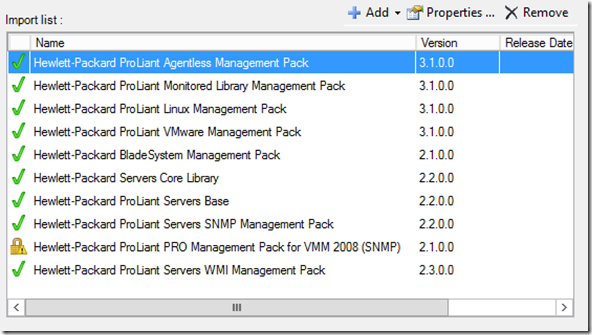
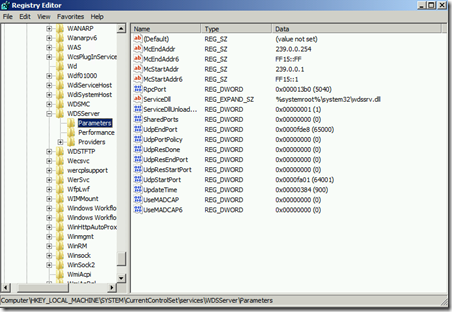
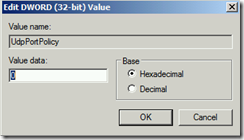
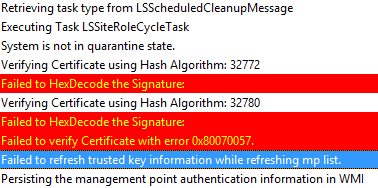

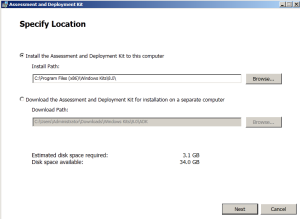
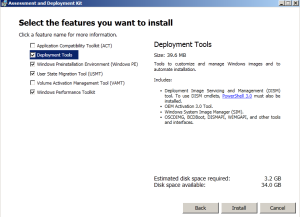
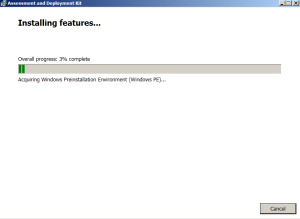
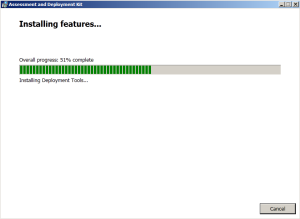
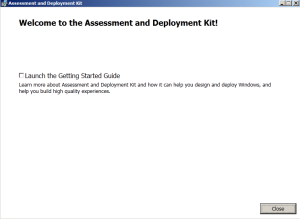
No hay comentarios:
Publicar un comentario